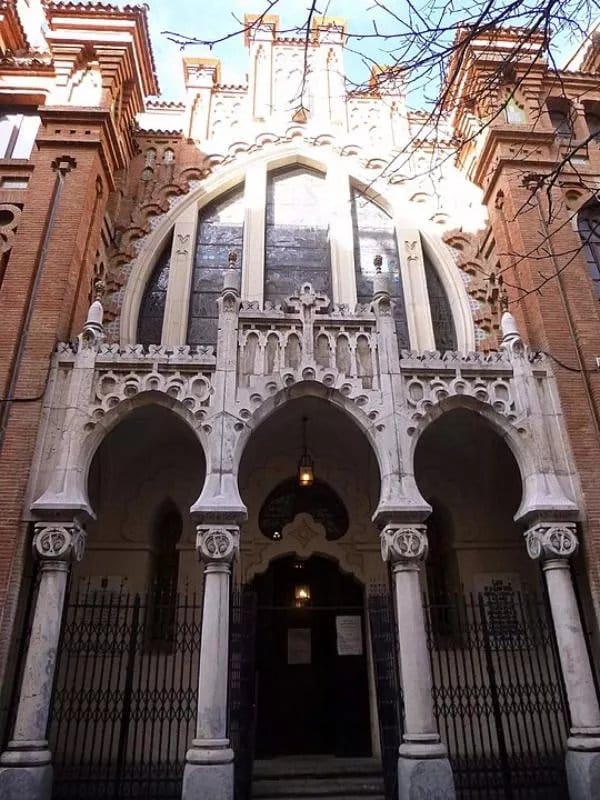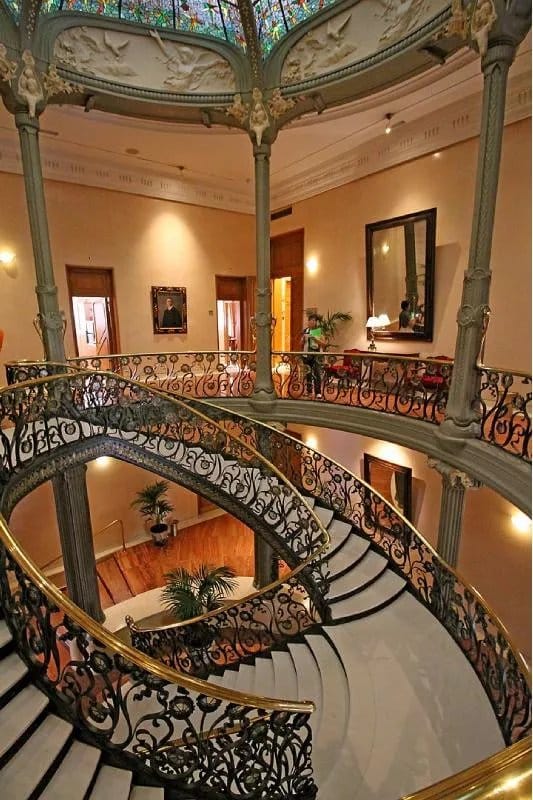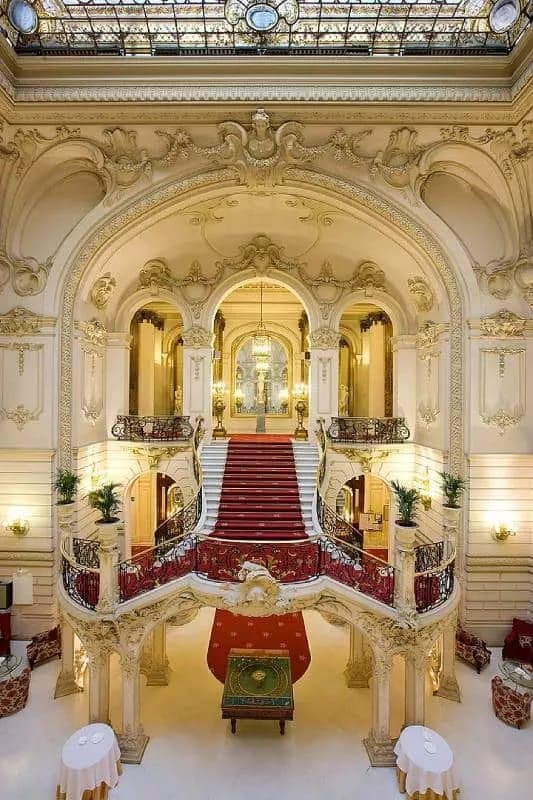
If we talk about modernism in Spain, most people will think of Barcelona, more specifically about Catalan architect Antoni Gaudí, who mastered this artistic movement of the late 19th century. It is true that the capital of Catalonia stands out when it comes to Spanish modernism, but it is not the only city exhibiting a rich modernist architecture. In fact, there are cities like Valencia, Melilla or Teruel where we can find interesting modernist buildings too. Today we will be focusing on modernist Madrid, which is slightly different from Gaudí’s approach towards modernism.
The lack of a forward-looking bourgeoisie and the influence of the traditionalist institution known as Real Academia de San Fernando made it difficult for Madrid to join this new artistic movement. Nevertheless, despite the fact that the capital of Spain rejected the avant-garde, they did not want to fall behind the other European capitals. As a consequence, thanks to Madrid’s cosmopolitan aspirations, modernism was not entirely shunned there.

The church of Buena Dicha, a modernist building in Madrid. | Wikimedia
This is how modernism grew in Madrid, with two distinctive features that separated it from other artistic movements. First, modernism in Madrid has an eclectic nature, not only because it blends with other artistic movements, but also due to the eclectic essence of modernism. That is, it combines elements of the French art nouveau, as well as the Catalan and Viennese modernist styles. Secondly, when we talk about Madrid’s modernism, we are also referring to a decorative type of modernism, which mostly shows up in interiors and façades.
If we are to identify the modernist elements of the city, we will have to have a close look at Madrid’s architecture, such as its windows, façades, and gargoyles. We should also walk into different buildings, which might not seem modernist at first glance, but they keep true hidden gems inside. Modernism relies on attention to detail, and we are about to go look for it throughout the city.

Staircase at the palace of Longoria. | Wikimedia
It is estimated that Madrid is home to at least 200 pieces of modernism. We could not possibly go over all of them, so we will only explore some of the most remarkable modernist pieces of architecture in Madrid, starting with the renowned palace of Longoria.
It was built in 1912, designed by José Frases Riera for a banker called Javier González Longoria. Despite the fact that both the layout and the general essence of the building seem to be eclectic, the coating of its façade and many other elements inside the palace follow a clear modernist pattern. For instance, the main staircase and the dome of the palace of Longoria are worth mentioning here.

Staircase at the Casino de Madrid. | Wikimedia
Apart from the palace of Longoria, the staircase of Casino de Madrid is perhaps the most remarkable artwork of the capital’s early-20th-century modernism. This project was managed by architect José López Sallaberry, who designed the staircase crowned by a glass dome and decorated following the art nouveau architectural style. He based the design on a proposal by Antonio Palacios and Joaquín Otamendi, and the different sculptures decorating the main room combine vegetal and maritime motifs with hedonistic and mythological themes.

Cementerio de la Almudena. | Shutterstock
Cementerio de la Almudena, or the Almudena Cemetery, is one of the largest cemeteries in Western Europe, and it has modernist traces too. The beautiful architecture of this necropolis includes an impressive portico, administrative buildings, and a stunning chapel. Some elements of Cementerio de la Almudena even remind us of the designs of Catalan architect Antoni Gaudí.

Casa Pérez Villamil. | Wikimedia
There are many residential buildings in Madrid displaying modernist elements. We might find them when we stroll down the streets, anytime we pay attention to the shapes of the capital. Many of them could fall under the category of eclectic architecture, although they still have a strong modernist influence. For instance, this is the case of Casa Gallardo, in the street of Ferraz, the workshop of Patricio Romero in the street of General Palanca, or Colonia de la Prensa in Eugenia de Montijo. In fact, the latter was one of the greatest examples of modernist architecture in Madrid when it was first built. Nonetheless, currently its state of preservation is not great, although we can still admire the beauty of its main entrance.
Another residential building worth mentioning here would be Casa Pérez Villamil, also considered as a landmark of modernist Madrid. Once again, it is an eclectic building with several modernist details, including outstanding balconies and viewpoints, stained glass windows and beautiful rails.

The cinema Ideal in Madrid. | Shutterstock
This route through modernist Madrid could go on longer and longer. It is important to note that we can find traces of this artistic movement in all kinds of buildings, not only residential houses. Some of them are fairly popular, at least for the inhabitants of Madrid. For example, this is the case of Depósito Canal de Isabel II, right next to Madrid’s Matadero, or the cinema known as Ideal at Madrid’s city centre.
Mausoleums are a common representative of this type of architecture too. For instance, we have the mausoleum of Francisco Pi y Margall at the Cementerio Civil de la Almudena, the Panteón Guirao of the Cementerio Sacramental de San Isidro or the mausoleum of Mateo López Sánchez, among others.
Other buildings where we can follow the footsteps of modernist Madrid include the bridge of Reina Victoria, the theatre Infanta Isabel, the church of Buena Dicha or the shop of Vaquería-lechería in the street of San Joaquín. As we said before, this architectural style can be found all over Madrid. We just have to look closely at the city and we will find countless modernist details that make Madrid even more beautiful.